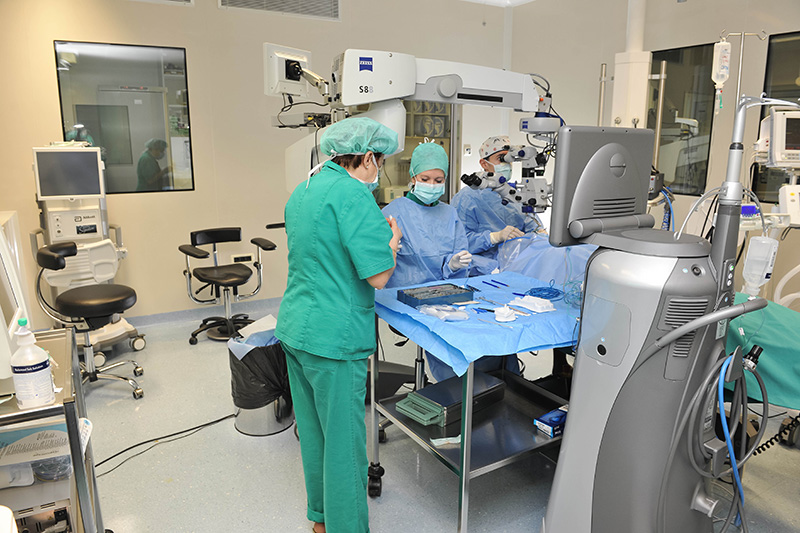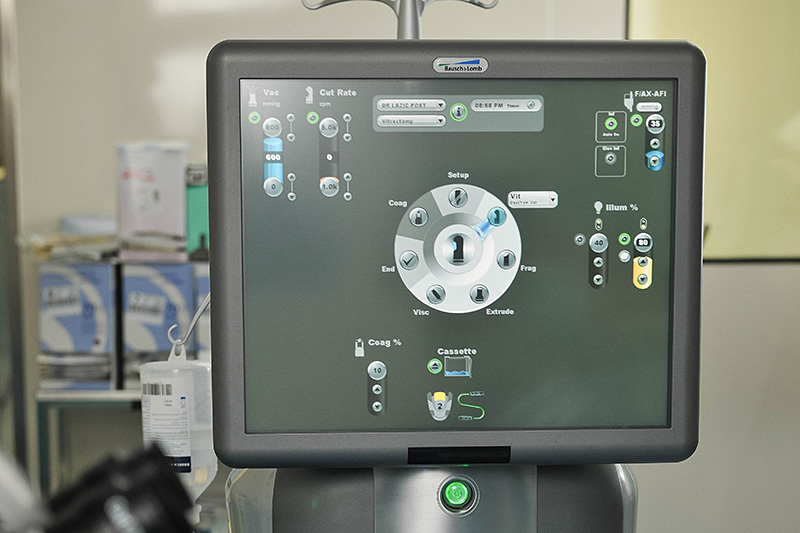What are the most common retinal surgeries?
The most complex retinal surgery is vitrectomy, the surgery at the posterior ocular segment. The doctor, retinal surgeon, performing vitrectomy accesses the deeper part of the eye via four 1mm incisions on the sclera, and performs the removal of vitreous and the repair of retinal pathology.
Is vitrectomy performed under local or general anesthesia?
With the development of technology and surgical techniques, today vitrectomy is a minimally invasive surgical procedure that is performed under local anesthesia.It takes an average of about an hour and a patient is discharged from the hospital 2h after surgery. The procedure is painless, there are no stitches, and is minimally traumatic. The recovery time after surgery is significantly shorter then previously.

How does the procedure look like?
Vitrectomy is performed in the operating room under a microscope in the presence of an anesthesiologist who monitors the vital signs of the patient and administers sedation drugs, as necessary. The anesthesiologist monitors vital signs, ECG, blood pressure, respiration and oxygenation, and administers sedation drugs to the patient, as necessary. However, there is no need to put the patient under general anesthesia. During surgery, very thin and delicate instruments are used. With this instruments surgeon can remove blood from the eye, as well as repair retinal damage or remove membranes, scars or foreign bodies.Usually laser treatment of the damaged retina is also performed.
Gas or silicone oil tamponade?
At the end of the surgery, tamponade is usually placed in the eye. The purpose of the tamponade as an "inner bandage" is to accelerate healing. At our clinic, after the procedure, we most commonly use gas or air tamponade. The advantage of such tamponade in comparison with silicone oil tamponade is in air or gas dissapating from the eye by themselves during 1-4 weeks period and no additional surgery is required, as is the case with silicone oil removal. If retinal demage is very severe then silicone oil is used. It remains in the eye for several months or even longer.

What retinal pathology is vitrectomy performed for at Svjetlost?
We use vitrectomy to treat a variety of eye diseases. The most commonly performed surgery is in treatment of retinal detachment to attach the detached retina with gas or silicone oil tamponade. Surgery is also needed to repair damage caused by diabetic retinopathy. Blood and proliferative tissue is being removed. Vitrectomy is effective in the treatment of diseases of the macula like macular holes or epiretinal membranes. We also perform complex retinal reconstructions damaged by severe ocular trauma:
What is the success rate of vitrectomy and how long is the recovery period?
Vitrectomy is a very successful surgical procedure especially if done with no delays. For the patient, it is easily tolerated with an extremely low rate of potential complications. Postoperative recovery is short (1-4 weeks) what anables patients to quickly return to their normal activities.


